Moving is anything but easy. It can leave you puzzled with questions like – should I sort through accumulated household items first, or cut time off from work to pack?
The great thing is, you’re not alone — 21 percent more people are moving in 2021 than they did in 2020 (1).
But not to worry, we’ve put together 35 best moving hacks to ease your moving, stay organized, plus save time and money.
Let’s jump in.
Moving Hacks for Your Kitchen

The kitchen requires meticulous planning when moving — a game plan. With small items that you may forget, not to mention breakable plates, packing your kitchen could be an extreme sport.
However, you can streamline this process by
- Sorting out your kitchen items,
- Ensuring you keep the essentials in place, and
- Disposing of old pantry items.
Use these hacks to make moving your kitchen easier.
1. Pack Your Dinner Plates with Styrofoam

When packing your plates, lay each of them vertically, and place disposable styrofoam plates between them and at the corners of the box.
Styrofoam is made out of styrene, which expands under pressure to form a foam board. This foam board acts as a cushion that keeps your plates from breaking, and lying the plates down vertically makes it hard for them to slip sideways.
Nevertheless, clean clothes can work well, albeit not very effectively, when you don’t have disposable styrofoam plates.
2. Stock Pots and Kettles with Spices
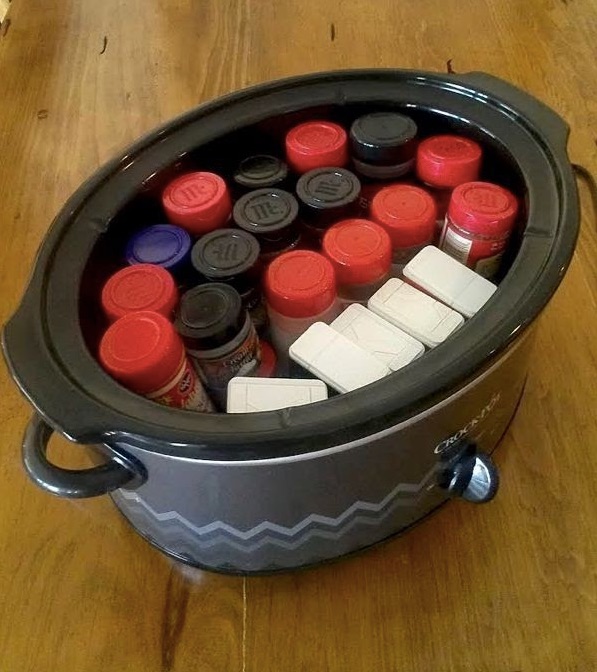
First, seal all open condiment containers with masking tape. Then, fill big pots that don’t nestle with each other with spices and various pantry items. Pack the pot in a box, then layer your spices and pantry items with clean hand towels between them.
This not only saves you space but keeps you from looking for spice essentials when you’re unpacking.
3. Pad Your Wine Glasses and Stemwares in Clean Socks or Bubble Wraps
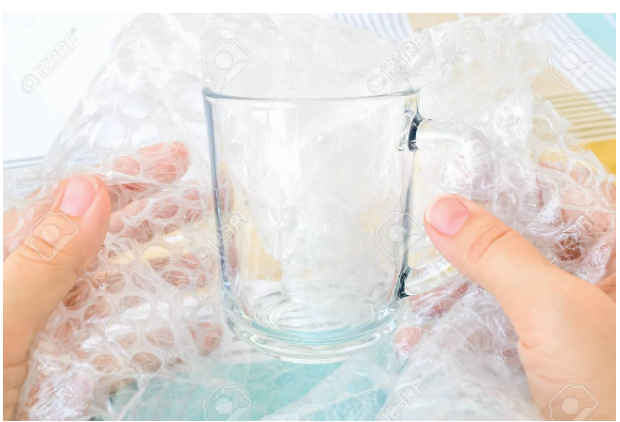
Before tucking them away in a box, put your wine glasses and stemwares in clean socks, neat clothes, or bubble wrap.
4. Secure Knives and Other Silverwares

Sheath kitchen knives in pot holders or packing papers to ensure no one gets accidental cuts.
Place blades in alternate directions on a kitchen towel or neat shirt, and wrap them in packing paper. But for potholders, put in blades first to secure them.
Wrap the spoons and forks in clean tissue bundles, and place them on a silverware tray before wrapping them with plastic film.
5. Leave Cupboard and Drawer Doors Open
You are likely to forget a utensil with all the bustles and hustle that comes with moving.
Leave your cupboard and drawer doors open to alleviate any fears of forgetting anything, and check them one last time before leaving.
6. Pack a Not-Frequently Used Box
After sorting out your pantry, start by packing a box for items you don’t use daily such as:
- Cookbooks
- Cookie pans
- Mixing bowls
- Dishcloths, dishtowels, and oven mitts.
- Special utensils
- Food storage containers
- Kitchen wall paintings
When you’re done, label it with a colored tape, so it stands out.
7. Prep and Pack Kitchen Appliances
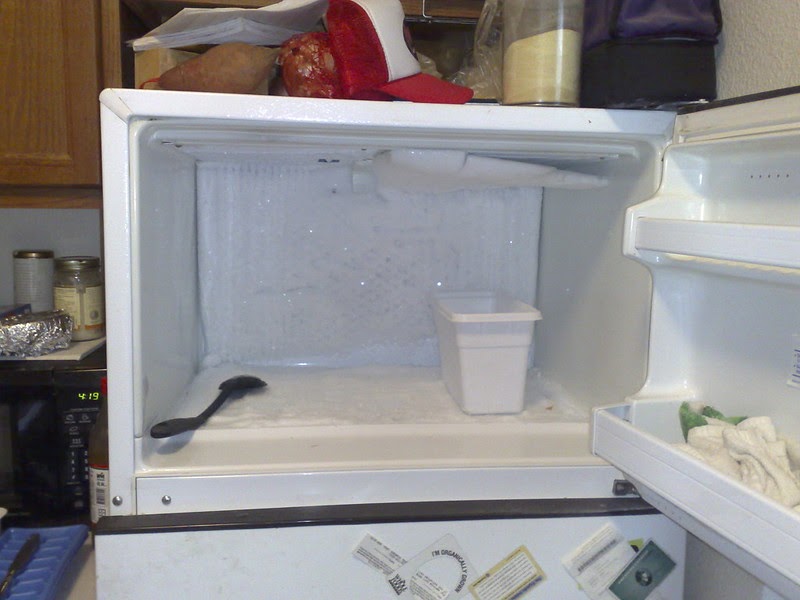
Prep small and large kitchen appliances before you pack them in boxes. You should do this at least 24 hours before your move. Start by
- Wiping grease or food debris off your appliances
- Defrosting the refrigerator or freezer.
- Unscrewing loose or removable parts.
- Securing loose cords with packing tape
- Wrapping each item in packing paper before fitting them into a box.
Small appliances like toasters, coffee makers, immersion blenders may not have their boxes around anymore.
You can solve this by using boxes closest to it in size and filling up gaps with packing paper.
Moving Hacks for Your Bedroom
Now it’s time to move your bedroom. Since almost everything fits in the bedroom, it can be crowded and challenging to pack.
Sort and organize your items as you pack. Get different boxes for non-essential and essential items, and label them with colored tape to know where you put each item.
Use these hacks below to make moving your bedroom items easier.
8. Throw a Neat Garbage Bag Over Hanging Clothes
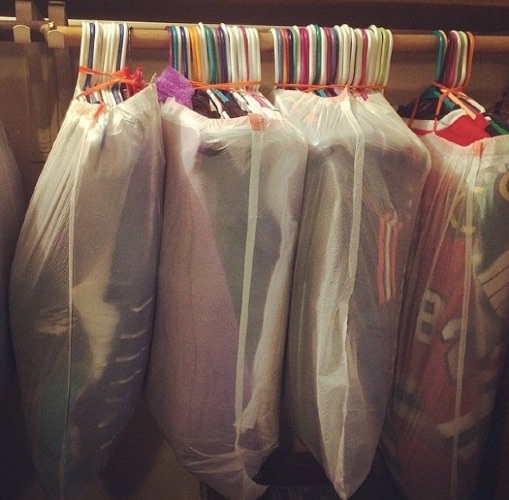
Slip hanging clothes in your closet into neat garbage bags to keep dust away and save you box space and time when unpacking.
Also, tie the top and bottom together, so the clothes don’t slip to the ground and get dirty.
Purge unwanted clothes or personal items you haven’t looked at in forever. If you haven’t used it for one year, discard them or donate it to charity.
Pack a bag of accessible clothes and accessories you’ll need in a week of moving to your new house.
9. Roll Clothes, Not Fold Them
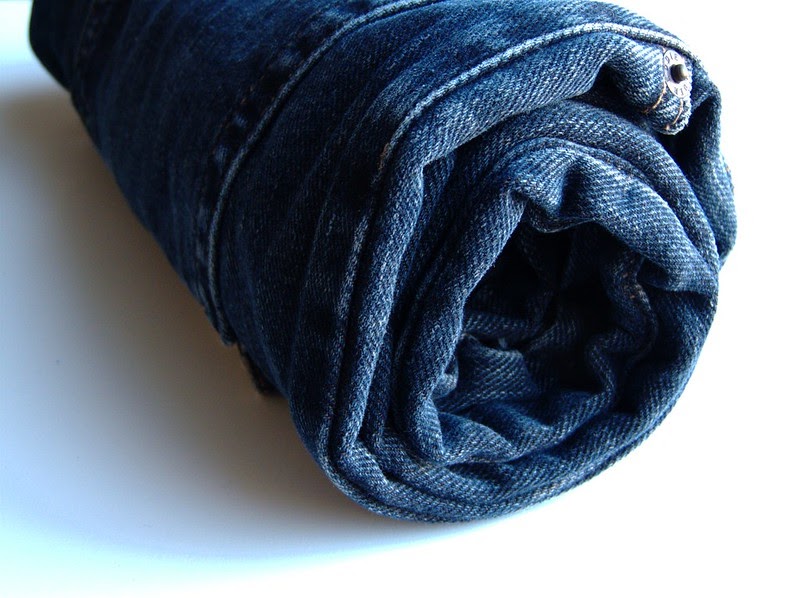
Rather than fold your clothes, roll them into straight balls to save drawer space. Then, wrap them neatly in plastic film to keep them in place.
10. Keep Jewelry in Egg boxes
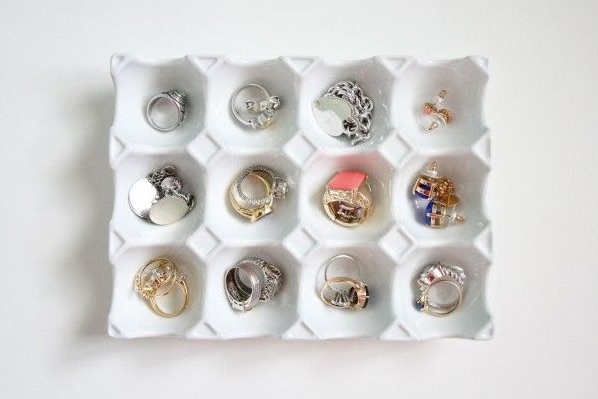
It’s easy to lose a pendant or earring hook when you store your jewelry in one box. To avoid this, sort and keep them in different spaces in an egg box.
11. Ready an Essentials Box

Throw in essentials you use daily like a few home clothes, deodorants, and toiletries into one box, small suitcase, or backpack for easy carrying.
12. Pad Powder Cosmetics With Cotton Balls
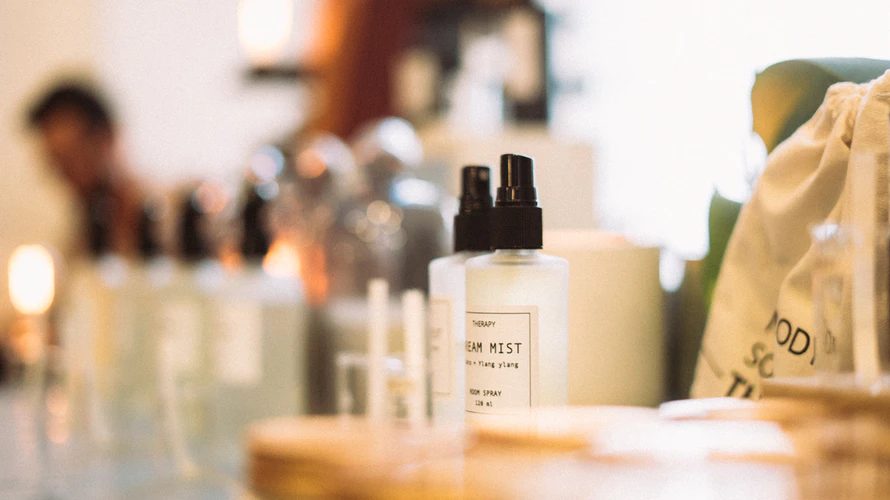
Cover powder cosmetics with cotton pads or balls to stop them from breaking on impact.
13. Pack and Label Items
Pack and label small and fragile items before you work on the major parts of your room. Wrap items like glass ornaments and lamps in bubble wrap to keep them safe and provide extra cushion.
Pack several boxes of fragile room items together and stuff them up with tissue paper beneath and in every corner. Keep smaller things like knots and bolts in sealable bags, and label them.
14. Stuff Your Shoes to Maximize Space
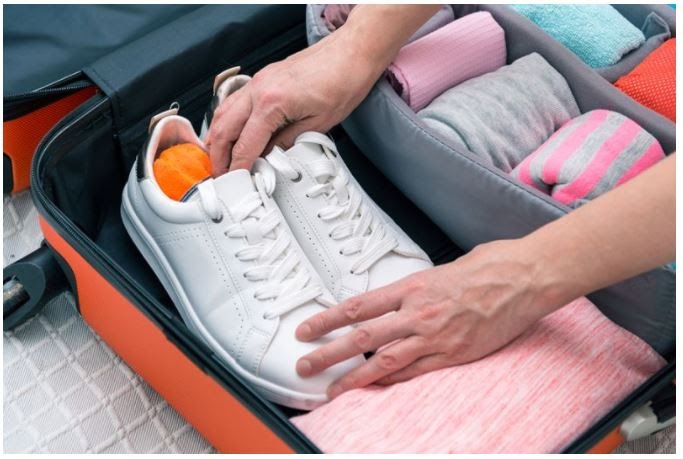
Stuff basic items like hairbrushes or hand cream into shoes for more box space.
15. Keep Shoes Organized with Wine Dividers
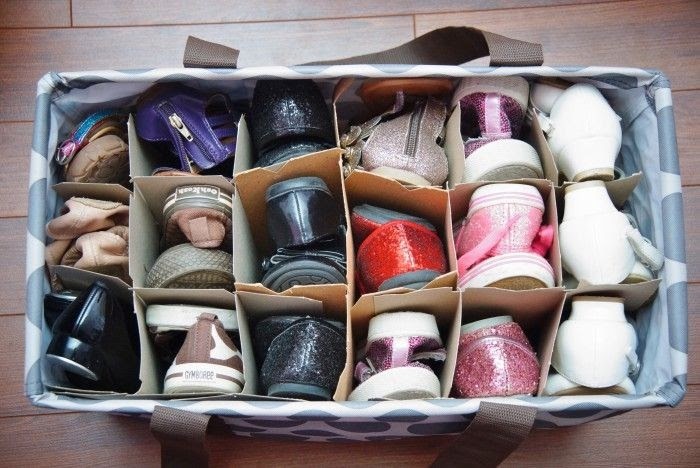
You can use wine dividers to create shoe cubicles in boxes to keep them organized.
16. Roll Up Posters and Rugs
Roll posters and rugs and tie them on each end with a sturdy rope to secure them. After, put it in a larger plastic bag, roll it, secure it with twist ties, and then seal it with packing tape.
17. Prep Your Mattress for Packing
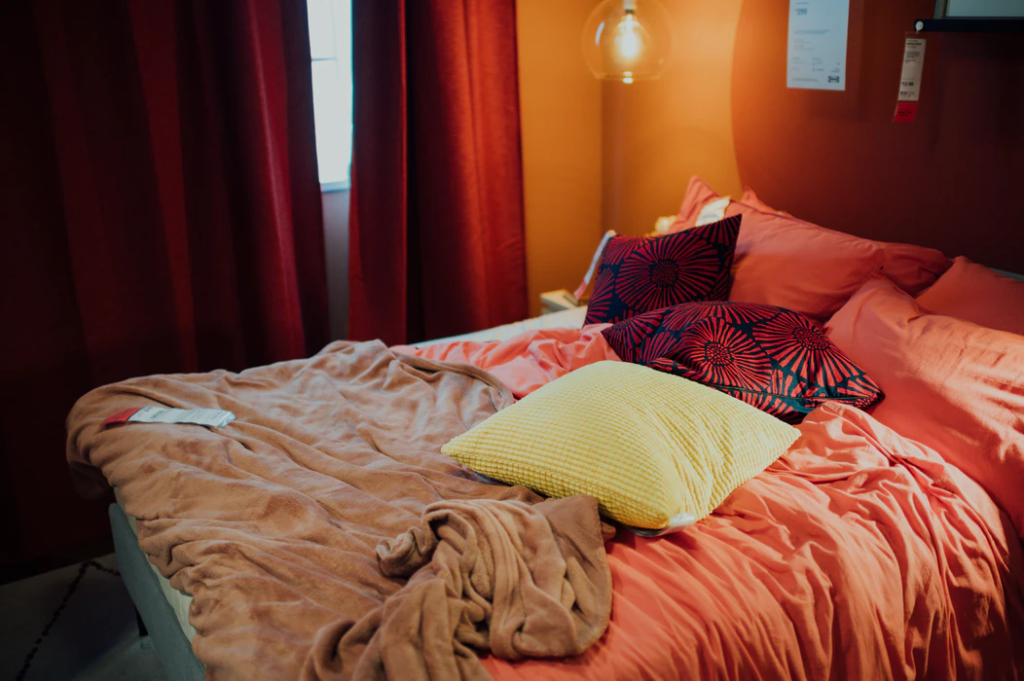
The mattress might be challenging to pack for one person, so get a friend to help you.
Wrap your mattress in thick plastic wrap and tie it with a sturdy rope to secure it on the top of your car if you’re moving by yourself.
Moving Hacks for Your Bathroom
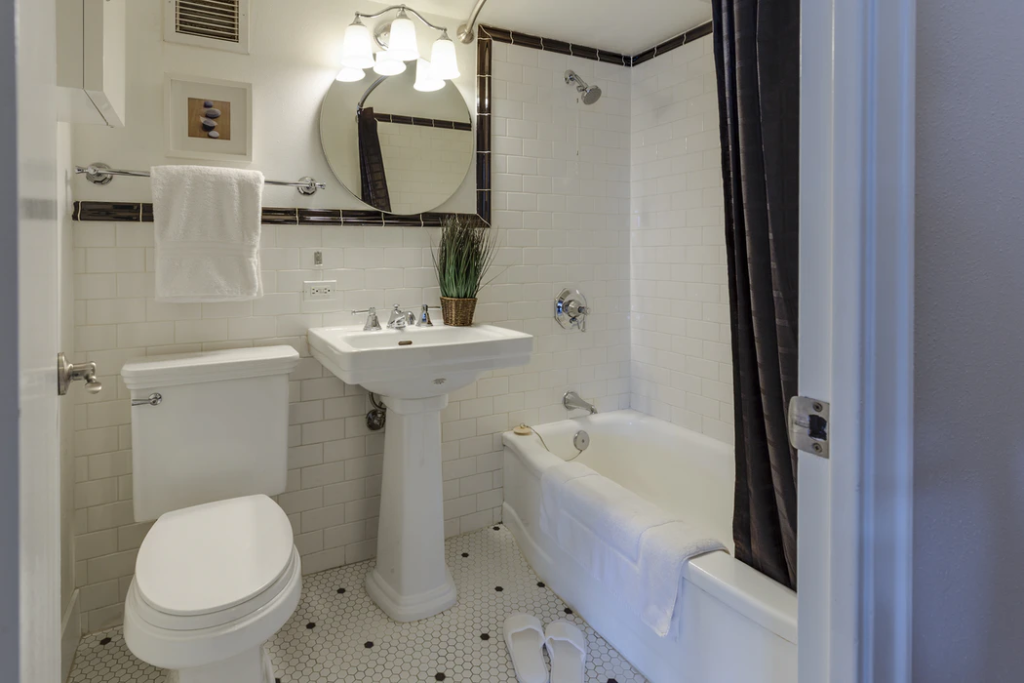
Do not make the mistake of cramming everything you’ve got in your bathroom together on the move day.
You might have some belongings in there that you don’t use anymore, are expired, or standing on their last leg – discard them.
Purge, sort, and organize bathroom items with these great hacks for moving your bathroom.
18. Sort Your Bathroom Items
Group your bathroom items by categories that let you know essential and non-essential supplies to pack, discard or donate to charity.
19. Dispose of Unused Medicine

Clear your cluttered medicine cabinet. Safely dispose of medicine that
- Are expired
- Are ineffective
- Looks weird or smells differently
- Have unreadable labels, or
- You’ve completed their dosage or don’t plan to complete it at all.
When disposing of the medicine, take it to a local household waste facility (2) or contact the FDA (3).
20. Trash Used Objects
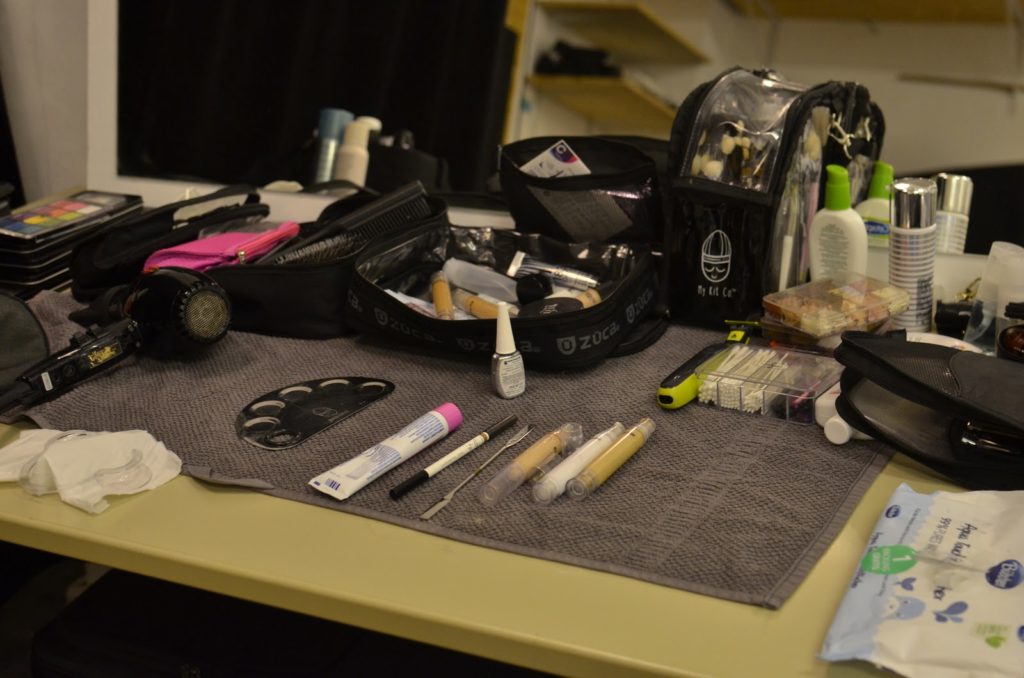
If you’ve got used or old shaving accessories, trash them. Old cosmetics like dry mascara, dried-out or cakey foundations, and congealed nail polishes should have no place in your new home.
21. Seal the Lids of Hair Products and Body Lotions
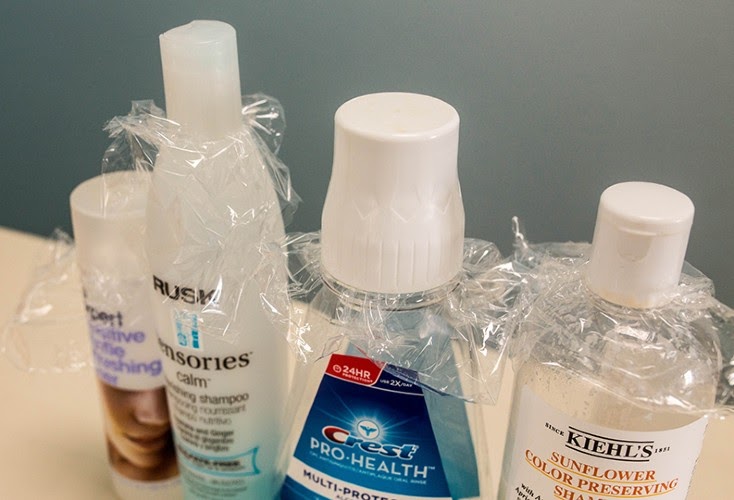
Use saran wraps to seal the lids of opened liquid products like shampoos and body creams. This will keep it from spilling and making a mess as you move.
22. Pack Bathroom Items in Small Boxes and Label Them
Once you have a realistic idea of bathroom items, you can’t do without, pack them into small boxes and label them.
Objects like hair dryers, curling irons, or electric shaving razors should go in their box. And, toiletries like shower gels and body lotions should go into another.
Line the inside of the boxes with garbage bags to provide extra security for smaller items and won’t have you scrambling to access them.
23. Wrap and Tape an X on Your Mirrors
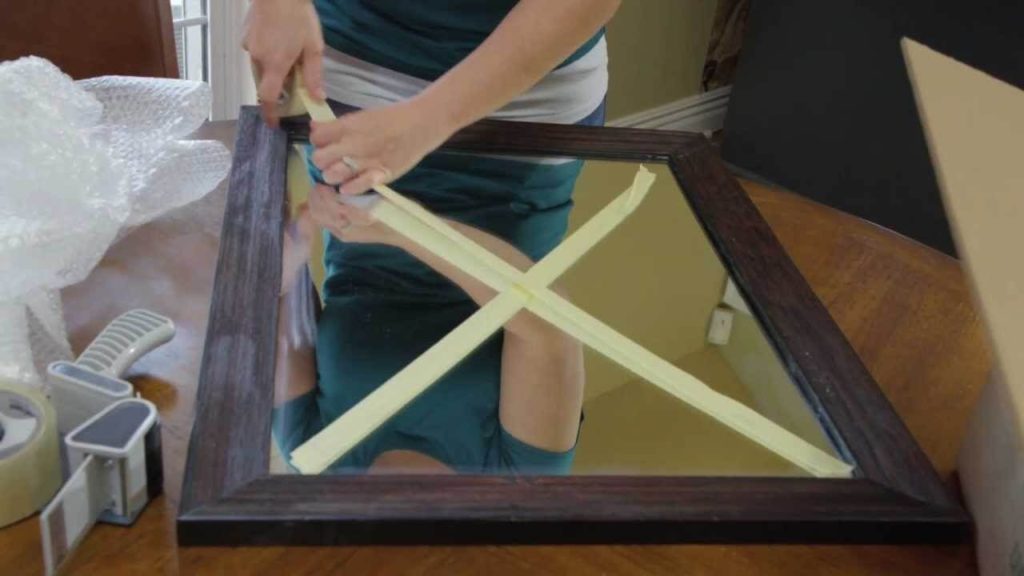
Take extra care when moving your mirror. Use the following tips to secure your mirror while moving.
Tape an ‘X’ on the mirror glass with packing tape.
Guard the edges against damage with corner protectors.
If you have a mirror with odd-shaped or curved edges, get a bit creative with bubble wraps by fixing them onto the edges to do the trick.
Measure and cut the right-size cardboard sheet for your mirror, and affix it onto the glass with clear tape.
For extra protection, place a same-size piece of styrofoam on the cardboard paper before wrapping it in bubble-wrap or moving blankets.
Another great hack is to place your mirror into a custom-made box or wooden crate for a snug fit when moving. This will protect the mirror glass from accidental bumps while moving.
Remember to mark the box as fragile, so your movers know and take extra care when moving the item.
24. Pack Unused Towels In Heavy Boxes
Place unused towels on the top of heavy boxes before sealing them. They’ll fit the extra space without adding excess weight.
25. Keep Essentials Handy and Reachable
Ensure you leave out handy essentials like deodorants in a clear bag where you can always see them. And keep a first aid kit handy in case of a minor home accident during the move.
Moving Hacks for Your Living Room

The living room is large enough to give you cold feet when moving. To tackle this, come prepared with a pack of tools for disassembling furniture and putting other items such as rugs and electronics in place.
Use these brilliant hacks to stay organized and make moving your living room a breeze.
26. Store Light Bulbs in Boxes
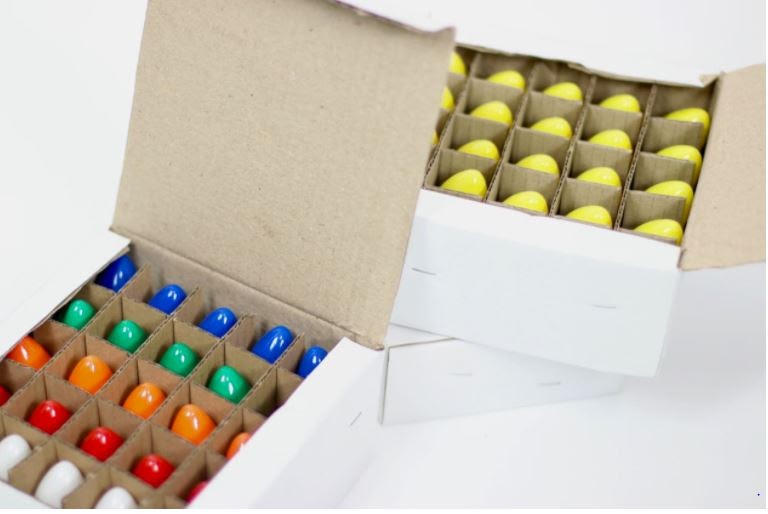
Though this might be the last thing you do on the move day, switch off light bulbs to cool off some hours before you pack them.
Unscrew light bulbs from their lamp holders, and keep them safely in ornament boxes or bubble wraps.
27. Snap a Picture of Your TV Wiring
Avoid mixing up colored wires when you want to assemble your TV in your new place. Take a picture of where all the wires go on your phone.
This makes it easy to remember where the white, blue, or red wire-heads will go.
28. Pack Your Electronics in a Box, and Mark it Fragile
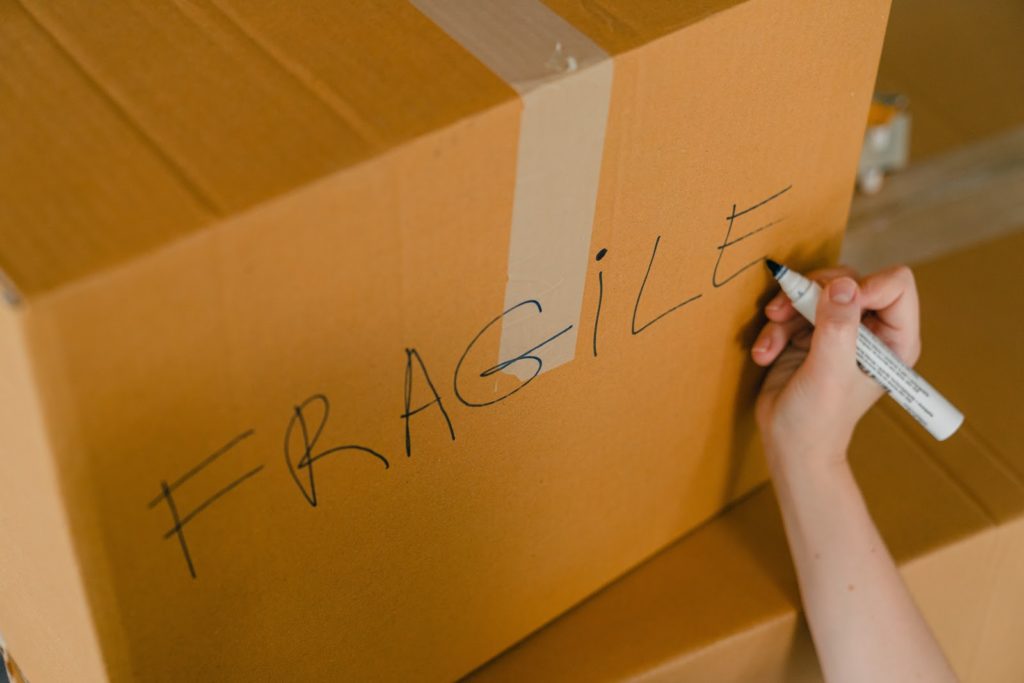
When packing your electronics in a box, the heaviest and largest goes in first, followed by the lighter ones. Wrap TV or computer screens with a blanket or towel and bubble wrap. Bundle TV cords and console wires with twist ties or packing tape before you label them.
Before packing them, line the boxes with anti-static material like soft clothing or styrofoam pieces for extra security against impact.
29. Bubble-Wrap Fragile Objects to Secure Them
Most fragile objects are kept in the living room. Take the utmost care when moving these objects from your living room,
Framed Pictures and Mirrors: As we said earlier, mirrors and objects with glass must be wrapped with layers of protective materials like bubble wraps and styrofoam before placing them in a box.
Secure the edges of large pictures and mirror frames with pipe insulations before wrapping them with bubble wraps.
Decorative Items: Bubble-wrap valuable decorative items and place them in a box lined with crumpled paper.
30. Disassemble Your Furniture
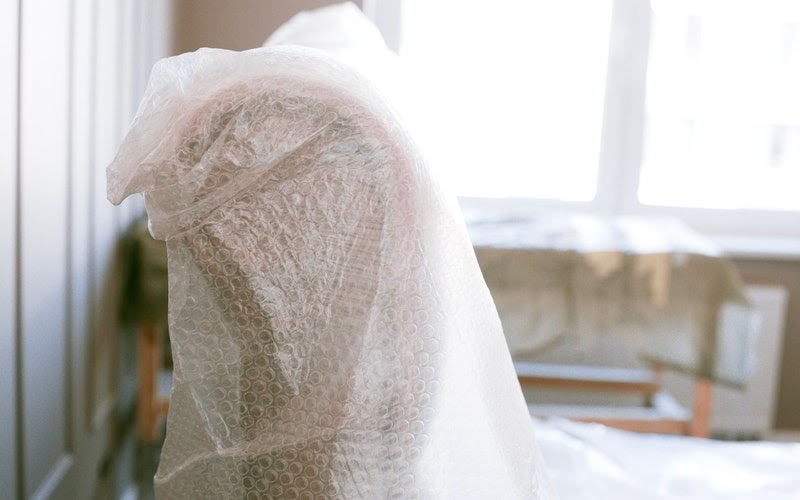
Large furniture can’t fit or pass through small doors. You must take them apart and secure them as separate components. Then, reassemble them when you get into your new home.
Before you begin, get the following tools and items ready to disassemble your furniture.
- Packing tape
- Bubble wrap
- Sealable bags
- Plastic stretch wrap, and
- Furniture blankets.
Then proceed with these next steps:
Loosen the screws of the legs of the sofa or table by turning them counterclockwise.
Remove the armrests of your sofa to ensure the furniture can pass through all doorways.
Place label stickers accordingly on each fastener before you seal them. For instance, if you unscrew ten bolts from your center table, label it as “1 of 10” or “2 of 10” so you know where each bolt goes when you’re reassembling the item.
Store all fasteners (knots and bolts) in separate, clear plastic bags. Duct-tape them to the back of your furniture to make sure you never lose them.
Wrap the disassembled furniture parts in bubble wraps and furniture blankets. Read instruction manuals to learn how to disassemble your furniture safely.
31. Disassemble Your Lamps
Separate your lamps into carryable parts. Place the base in a box filled with crumpled paper to keep them safe.
When moving the lampshades, use larger sturdy boxes lined with paper or bubble-wrap to pack them. Seal the boxes shut with tape, and label them as fragile.
32. Close up Nail Holes
Use bar soap to fill up holes you previously unscrewed nails from. This practice will protect those openings.
33. Keep Artworks in Envelopes and Label Them
Got artworks?
Put them in a priority mail envelope and label them. If you need the artwork to arrive before the rest of your stuff, put the envelope inside a fitted box before transporting it.
If the artwork has a glass surface, pad the box with bubble wrap and styrofoam material, then slide the artwork envelope between them for an extra cushion.
Moving Hacks for Your Home Office

It’s easy to mix up sensitive files and documents when moving your home office.
Along with preparing and packing, you should send out notices to clients letting them know you’ve moved and a new home address to reach you.
We’ve laid out some tips to get you started on moving your home office.
34. Sort Office Essentials First
Depending on what you do, your office essentials could be anything from important paperwork, sensitive files to camera stands.
Whatever the case, sort these items out separately.
Ensure you detach headphone accessories, camera cords (if you use them), and chargers in different sealable bags before placing them in a box.
If you’ve got a library, sort the books by different categories like
- Size
- Genre or Author
- Hardback and Paperback
You can also sell or donate books you won’t need anymore.
35. Pack Your Books Spine Down
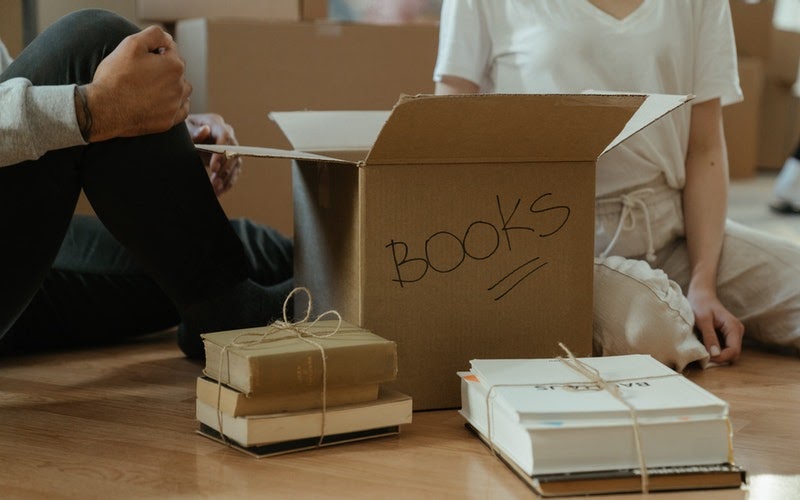
Ensure to pack your books in a sturdy book box. Book boxes are thicker than corrugated boxes, measures 17”x 12 ⅜ x 12 ⅜’’ (W x L x H ), and holds up to 65 lbs of books.
Here’s a straightforward way to pack your books.
- Line the insides of each book box with packing paper.
- Place the sorted books inside; spine down, pages facing upward.
- Lift it periodically to know when it becomes too heavy to carry.
- Pad the top and sides of the books with bubble wrap or packing paper.
- Seal each box with packing tape and label it appropriately with a colored marker.
Always pack books of like sizes together. If you must layer them, place the heaviest or bulky books beneath, and the smaller ones on top.
36. Dismantle Office Furniture Before Move Day
You must dismantle your office furniture before move day, Sort and mark pieces that go together, and keep them in one spot.
37. Take Apart Your Desktop and Printer
If you kept the original packaging of your desktop and printer, now is the time to put it to use.
Start with taking a photo of your computer’s wiring. Then, meticulously disconnect all wires, and mark them with colored tape. Remove the toner and ink cartridges from the printer to avoid spilling.
Uncouple feeders or paper holders from your printer before wrapping the monitor and other hardware in moving blankets.
Ensure to pack the computer upright in a well-padded box so it remains safe during transport.
38. Seal Confidential Documents
Seal all confidential documents in sealable Ziploc bags or file folders. This will keep them intact and protect them from dust and moisture. Plus, you’ll have on-the-go access to them.
39. Take a Picture of Each Box
It’s necessary to take a picture of the content of each box before sealing it. This ensures that you know what goes in which box, saving you the hassle of opening everything at once in your new home.
40. Allocate Numbers to Help with Inventory
Keep an inventory of the content of your box by allocating numbers to different boxes. For every number, write down what’s in the box. This is a crucial step when moving sensitive content from your home office.
Bonus Tips Before You Get Moving
It’s move day, and you’re feeling pretty exhausted. No matter the time of the year, moving is stressful enough to scare you back to bed.
But before you go, we’ve got two bonus hacks that will ease the last of the moving process.’
- Fasten the door handle (of each room) with a rubber band to prevent the door from latching each time you need to move a box.
- Minimize the chaos by using color codes for each room’s box. Put each sticker by the side (not on top), so you know where each box goes in your new home.
Happy moving!
